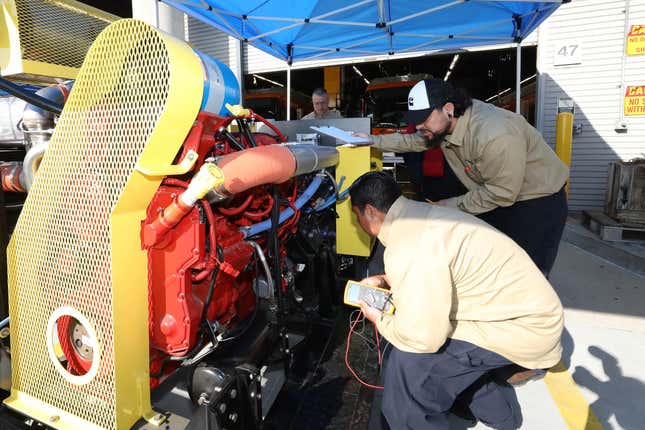I Need An Invite To LA Metro's Bus Roadeo Competition

Every year since 1976, the Los Angeles County Metropolitan Transportation Authority— or better known as Metro— has gathered bus drivers, mechanics and their families for a bit of fun competition known as the Bus Roadeo. Yes that’s how it’s spelled, and yes, it’s as interesting as it sounds.
2023 Mercedes-Benz EQS 580 4MATIC SUV | First Drive
Its still wild to me that something like this even exists. The roadeo is split into two main events: one for transportation workers and one for maintenance. These two sides compete in different challenges and obstacle courses and the ones that complete the challenges the best advance.
Image: L.A. Metro
The competition that really gets the most attention involves the buses themselves running through obstacle courses. Twenty bus operators compete in 12 timed obstacle courses. It looks as if the hardest and most interesting obstacle course is something called the rear duals clearance, according to the Metro’s blog:
I asked a few people which obstacle was the hardest. The answer was unanimous:
“The rear duals clearance.”
In layman’s terms, that means that the bus operator must clear the bus’s right rear tire through a narrow “tunnel” made of tennis balls.
But there’s a catch, Andres Carillo, the TOS Supervisor at the Operating Central Instruction (OCI), explained to me. Carillo set up the course –– a weeks-long process –– and has been doing so for the past four years.
“A standard bus tire is 26 inches,” he explained. “So we spaced the first set of tennis balls at 32-inches apart. But the space between the balls shrinks to 29 inches as you continue through the ‘tunnel,’ so there’s less and less room for error.”
The operators agreed with Carillo’s assessment. “I prepared for them, I found them, and I still managed to hit a couple,” said Joe Barbosa, Metro’s seniormost bus operator (he’s been at it for the past 49 years). This wasn’t his first roadeo –– he’s competed 45 times! But the obstacle course is always a challenge. “We are very good at driving through Los Angeles streets and providing a safe service for riders,” he told me, “but when you compete and you hit a few cones, it’s very humbling.”
That is intense!

Image: L.A. Metro
The maintenance competitions are a little more complicated; within Metro there are 10 maintenance divisions. Each division has teams of three who are usually the top in their division. These 11 teams are the ones that get selected to compete. They have to make their way through six timed competitions:
Bus inspectionAir brake boardHVACCummins power train (ie. engine repair)Bus doorsWritten test
Each of these requires a hands-on approach from the teams, according to the Metro:
For each of these categories, the teams are required to inspect, troubleshoot, diagnose, correct, and record the planted defects in the machinery while instructors look on with their clipboards and stop-watches. It requires an incredible breadth of skill, teamwork, communication, as well as resilience under pressure.
The maintenance competition started in the 1980s. Harold Torres, senior director of Metro’s maintenance facility explained how its been interesting to see how the tech has changed over the years during the competition:
“Originally everything was old diesel,” he told me, “and the doors worked by air and hydraulics. Now we have doors that are electric, engines that are CNG, and computers that talk to one another. In the future, we won’t have engines –– we’ll be testing electric motors or propulsion systems!”
Apparently this is all just one part of a larger nationwide and international competition that gets hosted by the American Public Transportation Association. The winners here will get to advance to a final competition hosted by the association. I had no idea any of that existed.
With my love of buses, finding out about something like this is fantastic. I just wish I could compete myself, or at the very least, come watch. So if anyone from Metro is reading this, invite Jalopnik out to the festivities in 2024.







